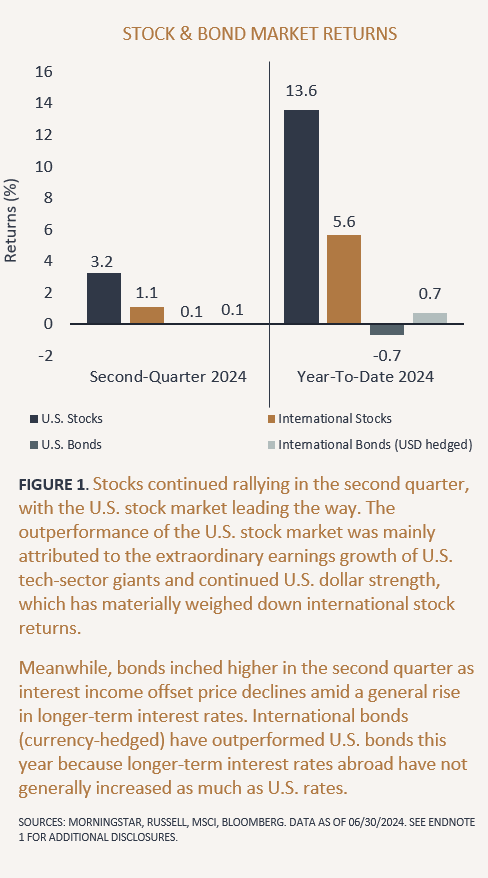I. The Bread and Butter of Consumer Sentiment
Food and dining habits often serve as early indicators of household well-being. Recent data shows a clear shift: consumers are increasingly choosing lower-cost options—fast-casual dining, frozen meals, store-brand groceries—signaling tighter wallets and waning confidence in the economic outlook.([turn0news15]
Restaurant spending dropped 0.9% in May, and although a modest uptick occurred in June, levels still remain below the stimulus-fueled highs of 2022–23. Foot traffic at sit-down restaurants was flat, with fast-casual visits rising only slightly—reflecting a selective return rather than a rebound.([turn0news15]
Meanwhile, grocery-shopping behavior is changing: smaller baskets more frequently, increased reliance on canned or frozen staples, and rising interest in value brands—another signal that households are prioritizing affordability over variety.([turn0news15])
II. Price Pressures at Home and Away
According to USDA’s Food Price Outlook, overall food prices climbed 2.9% year-over-year by May, with grocery (“food‑at‑home”) rising 2.2% and restaurant meals (“food‑away‑from‑home”) up 3.8%.([turn0search2]
This divergence partly explains why consumers are eating in more often—restaurant food remains relatively more expensive due to labor and service costs, making cooking at home increasingly appealing.([turn0search2])
III. Shifting Patterns: Where Are Americans Eating?
1. Cutting Back on Sit‑Down Dining
Data from Bank of America and restaurant chains reveal that lower-income households are cutting back sharply on casual-dining visits. Darden Restaurants (Olive Garden, LongHorn) saw fewer diners placing high-margin extras like desserts and drinks, while fast-casual chains like Cava reported gains from cost-conscious customers trading down from pricier venues.([turn0search4]
2. Growth in Value Quick‑Service and Grocery Retailers
Convenience and cost-efficient chains—including Casey’s General Store and discount grocery stores like Aldi—are seeing growth as consumers seek meals that offer both affordability and convenience.([turn0search4]
Costco, meanwhile, reported rising sales of meat and produce in its Q1 2025 earnings—consistent with more Americans cooking meals at home.([turn0news24]
IV. Behavioral Indicators of Economic Strain
1. Frozen Pizza Boom
Frozen pizza—long considered a recessionary staple—continues to thrive. Sales grew from $5.6 billion in 2019 to nearly $7 billion by 2024, with analysts predicting 6.6% annual growth amid heightened economic uncertainty.([turn0news20] The product’s low cost, convenience, and familiarity make it a go-to for cost-saving households.
2. Shrinking Grocery Basket Size
Instead of buying in bulk, shoppers are making frequent trips for small orders to manage cash flows. Many are selectively trading down in brands, opting for value packs or generic labels, and emphasizing shelf-stable meals that stretch across multiple meals.([turn0search11])
V. Why the Shift Matters: Macro Signals and Economic Implications
A. Early Warning Signs of Consumer Stress
Food consumption is highly visible and frequent, making it a sensitive gauge of consumer conditions. As Michigan State’s food-economics expert David Ortega notes, tightened spending on food—even basic meals—reflects broader financial pressure.([turn0news15])
Inflation-adjusted disposable income fell 0.7% in May, and lower-income households are disproportionately affected—leading to sharper cutbacks in restaurant spending and cost-driven grocery selection.([turn0news15]
B. Retail Realignment and Sector Winners
Discount retailers—like Walmart, Aldi, Dollar General—as well as fast-casual chains offering value and convenience, are capturing increased share from mainstream grocers and casual dining.([turn0news22]This dynamic reflects consumption shifting toward essentials and discount formats.
VI. Uneven Impact: Income Divide and Health Implications
While higher-income consumers continue spending on travel and dining, many are also tightening habits—shopping at discount grocers, skipping luxuries, and favoring value where possible.([turn0news15]
Low-income households, meanwhile, face difficult tradeoffs. One Pew survey finds nearly three-quarters say rising healthy food costs have forced them to compromise diet quality.([turn0search10]
Additionally, rising demand for ultra‑processed foods—cheaper but less nutritious—is linked to worse health outcomes and greater disparities.([turn0search10]
VII. Broader Economic Consequences
1. Consumption Weakness
Consumer spending makes up nearly 70% of U.S. GDP growth, and food services are a key component of that. Dampened restaurant traffic and grocery shifts suggest a phase of subdued discretionary spending.([turn0news15])
2. Inflation’s Complex Effects
Food inflation remains elevated—up to 3.8% year-on-year for dining out—but smaller grocery price increases (around 2.2%) give consumers some opportunity to trade down. Still, rising costs mean less real purchasing power.([turn0search2])
3. Retail Restructuring
Rising foot traffic at discount grocers, budget eateries, and wholesale clubs points to retail winners and losers. Traditional chains and department-store-style eateries face risk if current trends persist.([turn0news22])
VIII. What Comes Next: Key Trends to Monitor
- Disposable Income Trends: Continued declines in real incomes could deepen cost-cutting behaviors.
- Restaurant Recovery Signals: Elevated foot traffic at dine-in restaurants—especially full-service—would hint at stabilizing sentiment.
- Grocery CPI Movement: Any acceleration in food‑at‑home inflation may further squeeze budgets and alter purchasing.
- Retail Consumption Patterns: Will discount formats continue to gain at the expense of premium options?
- Public Health and Policy Response: Increasing reliance on processed foods may warrant policy interventions to address food insecurity and dietary health.
IX. Strategic Outlook for Consumers and Businesses
For Consumers:
- Embrace cooking at home where possible to reduce food costs.
- Stock up on shelf-stable staples and store brands to stretch budgets.
- Use meal planning and smaller basket purchases to optimize cash flow.
For Businesses:
- Restaurants should focus on value-driven offerings and pricing flexibility.
- Grocers that highlight private‑label brands, discounts, and convenience options will capture more share.
- Fast-casual chains positioned as affordable yet satisfying may outperform full-service restaurants.
For Policymakers:
- Food assistance programs like SNAP may face increased demand as dietary shifts push more households toward lower-quality but lower-cost foods.
- Health outcomes and food security initiatives must account for changing nutritional behavior across income segments.
Conclusion: Not Just About Food — A Mirror of Household Strain
The move toward cheaper meals—more at-home cooking, frozen staples, value groceries, fast-casual dining—goes beyond food trends. It represents shrinking discretionary margins, tightened confidence, and adaptive behavior in the face of inflation, wage pressures, and economic uncertainty.






Leave a Reply